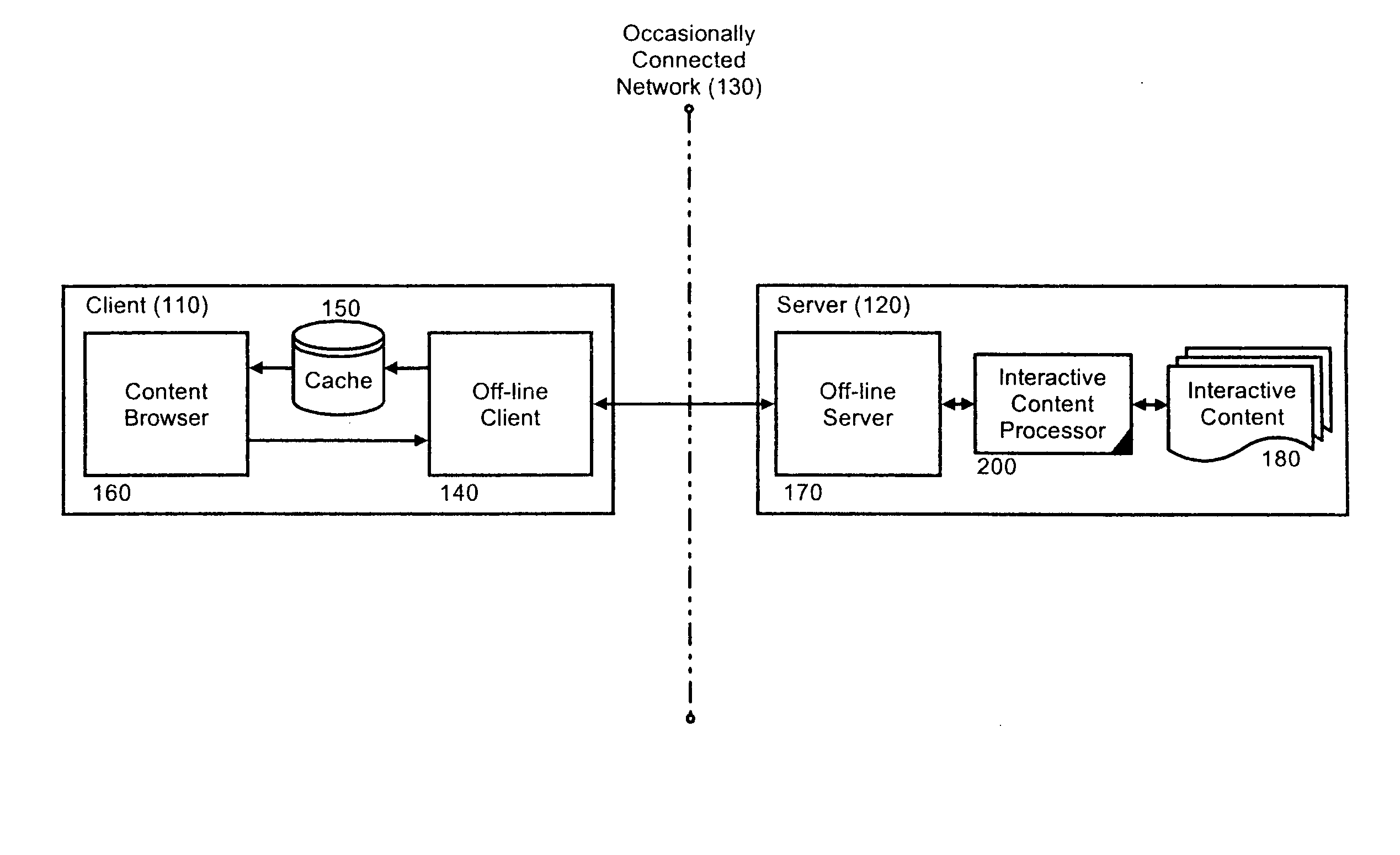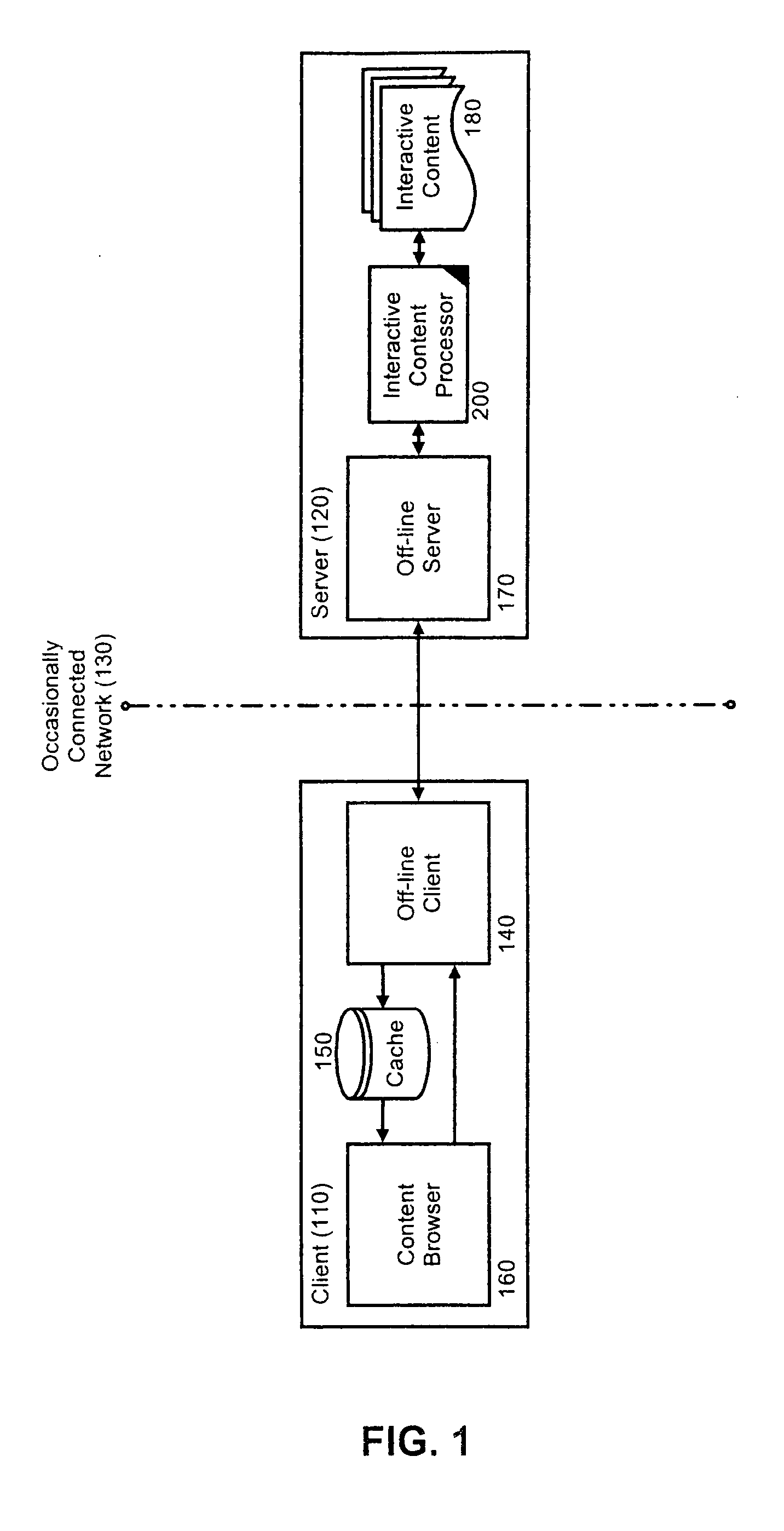Processing interactive content offline
a content processing and offline technology, applied in the field of offline content processing, can solve the problems of not being able to programmatically access commonly used urls deep within a web site, unable to guarantee and the inability of communicative coupling techniques to ensure the persistent and consistent nature of conventional network connectivity
- Summary
- Abstract
- Description
- Claims
- Application Information
AI Technical Summary
Problems solved by technology
Method used
Image
Examples
Embodiment Construction
[0018] The present invention is a system, method and apparatus for processing interactive content off-line in a dynamic system with transient addressability. In accordance with the present invention, dynamically generated content intended for off-line interaction can be retrieved from a content server and annotated with a set of hyperlinks for additional content associated with the retrieved content. The retrieved content can be placed in a client-side cache and the additional content associated with the retrieved content further can be annotated with additional hyperlinks and stored in the client-side cache. Importantly, hyperlinks which can result in wasteful processing such as refresh hyperlinks and hyperlinks to parent documents can be disregarded through hidden directives written in concert with the annotations.
[0019] The process of retrieving, annotating and caching can continue until no more content remains to be retrieved and cached. Significantly, however, during the cours...
PUM
 Login to View More
Login to View More Abstract
Description
Claims
Application Information
 Login to View More
Login to View More - R&D
- Intellectual Property
- Life Sciences
- Materials
- Tech Scout
- Unparalleled Data Quality
- Higher Quality Content
- 60% Fewer Hallucinations
Browse by: Latest US Patents, China's latest patents, Technical Efficacy Thesaurus, Application Domain, Technology Topic, Popular Technical Reports.
© 2025 PatSnap. All rights reserved.Legal|Privacy policy|Modern Slavery Act Transparency Statement|Sitemap|About US| Contact US: help@patsnap.com



